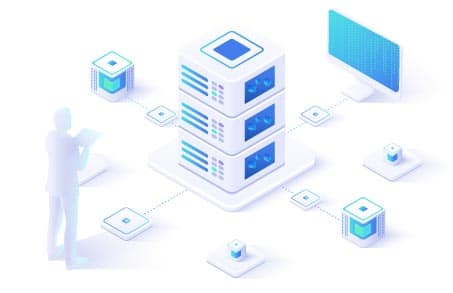The idea of converged infrastructure revolves around forming a single optimized IT package by putting together several components to meet present-day business needs. According to HP, converged infrastructure meets these needs “by bringing storage, servers, networking, and management together – simply engineered to work as one.” The end result is interoperability of IT components using resource pools based on a common platform. Convergence embraces all target resources in one shot, not on a piecemeal basis.
Network performance, supported by uniform applications and resources, is critical for making infrastructure convergence work; this is especially true for convergence implemented in a virtual environment. Virtualization, as the experts tell us, is the starting point of convergence. There is one interesting observation regarding the relationship between networking and convergence: although the network may be a target for convergence, it is at the same time the “connecting tissue” that binds the physical resources to the central abstraction upon which virtualization is based.
However successful convergence also depends on other factors, such as the continuing evolution of NaaS (Network as a Service, which is a cloud service) and SDN (software defined networking).
Infrastructure convergence can be achieved at the network and cloud levels. In fact, the evolution of the cloud has helped make the idea of fully converged infrastructure a reality. The cloud creates the need for abstraction of certain IT components such as servers, storage systems and network connections into virtual resources. Users manage these virtual abstractions through APIs (application programming interfaces). Using the network, the APIs distribute resources from a pool of various hardware elements to applications.
NaaS is a concept founded on two network missions created by the cloud: one, to connect the items comprising the resource pool collectively called the cloud: application, compute, and storage elements; and two, to support the connectivity needed by applications.
SDN is a service to support the need of NaaS. Three approaches to SDN have been developed: virtual overlay network (a.k.a. SDN overlay network), centrally controlled SDN, and non-centrally-controlled SDN.
In simple terms, the virtual overlay network allows NaaS to substitute for a traditional VPN (virtual private network). This is also a multi-tenant model that has partitioned services for all users and applications.
Centrally-controlled SDN enables a software controller using the OpenFlow protocol to manage network traffic by creating appropriate rules in every device. All aspects of traffic management and connectivity are directed by software.
The non-centrally-controlled SDN model seeks to achieve the benefits of OpenFlow-based SDN minus the burden of a control function to direct all connections and traffic. Instead of focusing on changes in network technology, this model prefers APIs for software control. By building on current network practices and protocols, this model can converge existing network devices into future SDNs.
Market observers have noted indications that a unified SDN that includes the three models mentioned has already been in the works.
m.tiggelaar
– Founder of Key4ce & FuseCP.
– More then 13 years of experience with Windows high availability and Microsoft Exchange.
– More then 13 years of experience with Linux and Unix.
– Open source enthusiast and a large contributor for multiple large Open Source projects.
My current main focus of attention is Geo-Clustering.

 Server deployment
Server deployment Server support
Server support Extended server support
Extended server support Managed servers
Managed servers